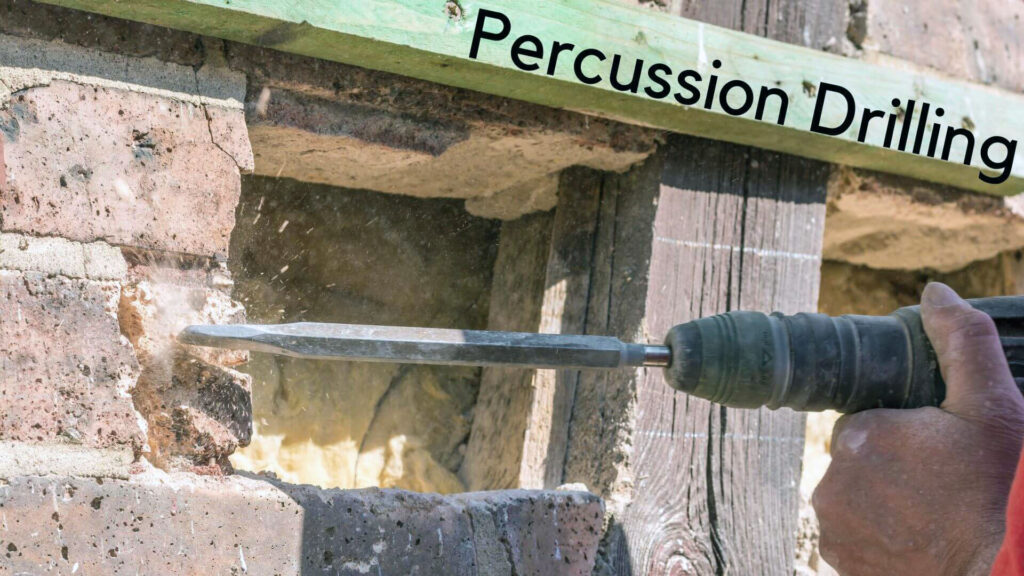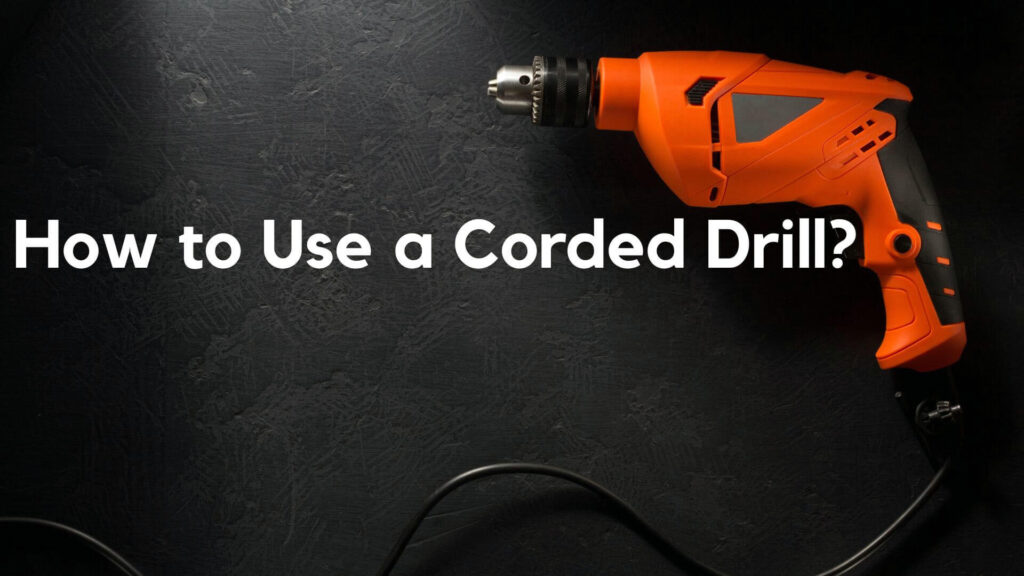Corded drills are versatile and powerful tools that are essential for any DIY enthusiast or professional tradesperson. Understanding how to use a corded drill effectively can enhance your productivity, ensure safety, and lead to better results in your projects. In this comprehensive guide, we will cover various aspects of using a corded drill, including its types, techniques for different drilling methods, safety precautions, valuable accessories, and frequently asked questions.
Table of Contents
What Types of Drills Can You Use With a Corded Drill?
A corded drill is not a one-size-fits-all tool; instead, it has different configurations based on the tasks you want to perform. Here are the main types of drills you can use with a corded drill:
1. Standard Drill/Driver
This is the most common type of corded drill, which combines drilling and driving capabilities. It is used for making holes in wood, plastic, and metal, as well as driving screws.
2. Hammer Drill
Hammer drills provide a hammering action while drilling, making them ideal for drilling into harder materials like concrete and masonry. They combine rotary motion with a rapid in-and-out motion, which helps break through tough surfaces.
3. Rotary Hammer Drill
Rotary hammer drills are heavy-duty tools used for professional applications. They deliver more power and are designed for drilling large holes in concrete and masonry. They often feature various settings for drilling and chiseling.
4. Impact Drill
Impact drills are designed for driving screws and fasteners. They deliver rapid bursts of power, which is useful for driving screws into tough materials without stripping.
5. Percussion Drill
Percussion drills combine rotary drilling with hammering action but are generally less powerful than hammer drills. They are suitable for light masonry work and drilling into concrete.
Check Also: The 7 Best Corded Hammer Drill For Your Home Improvement!
How to Use a Corded Drill for Impact Drilling
Impact drilling involves driving screws into hard materials. Follow these steps to use your corded drill for impact drilling effectively:
Step 1: Choose the Right Bit
Select a suitable impact drill bit, such as a Phillips or Torx bit, that fits the screw you will be using.
Step 2: Adjust the Settings
Set your drill to the impact mode, if applicable, to allow the drill to deliver extra torque.
Step 3: Position the Screw
Align the screw with the drill bit, ensuring it is straight and at the desired angle.
Step 4: Start Drilling
Apply firm, consistent pressure while drilling. The impact mechanism will help drive the screw into the material effectively.
Step 5: Monitor Progress
Keep an eye on the screw to ensure it is driving in straight. Stop once it is flush with the surface.
How to Use a Corded Drill for Rotary Drilling

Rotary drilling is commonly used for creating holes in various materials. Here’s how to do it:
Step 1: Select the Drill Bit
Choose the appropriate rotary drill bit based on the material you are drilling. For wood, use a twist bit; for metal, use a metal drill bit.
Step 2: Prepare the Drill
Insert the drill bit into the chuck and tighten it securely. Make sure the drill is set to the correct rotation speed for your task.
Step 3: Mark the Drilling Spot
Use a pencil to mark the exact location where you want to drill. This will help guide your drill.
Step 4: Position the Drill
Align the drill bit with your marked spot. Hold the drill firmly with both hands to maintain control.
Step 5: Drill
Turn on the drill and apply steady pressure as you start drilling. Let the drill do the work; do not force it through the material.
Step 6: Clear Debris
Periodically pull the bit out of the hole to clear debris, which can cause the drill to overheat.
How to Use a Corded Drill for Percussion Drilling
Percussion drilling is useful for drilling into softer masonry. Follow these steps:
Step 1: Choose the Right Bit
Select a masonry bit designed for percussion drilling.
Step 2: Set the Drill to Percussion Mode
If your drill has a percussion setting, switch to it to enable the hammering action.
Step 3: Mark Your Spot
Mark the spot where you want to drill to ensure accuracy.
Step 4: Position the Drill
Align the drill bit with your mark and ensure it is straight.
Step 5: Start Drilling
Engage the drill and apply firm pressure. Allow the hammering action to assist in breaking through the material.
Step 6: Monitor Progress
Keep checking to ensure you’re drilling straight and adjust as necessary.
Read More: How to Use a Ryobi Drill?
How to Use a Corded Drill Safely and Effectively?
Safety is paramount when using a corded drill. Here are essential practices to ensure safe and effective use:
1. Read the Manual
Familiarize yourself with the manufacturer’s instructions and safety guidelines specific to your drill model.
2. Wear Protective Gear
Always wear appropriate personal protective equipment (PPE), such as safety goggles, gloves, and ear protection.
3. Check Your Work Area
Ensure the workspace is clean and well-lit. Remove any obstructions that may cause tripping or accidents.
4. Use the Right Bit and Speed
Select the correct drill bit for the material and adjust the drill speed accordingly. Using the wrong bit or speed can damage the material or the tool.
5. Secure Your Workpiece
Clamp or secure the material you’re drilling into. This prevents movement and enhances safety.
Read More: Easy Tips For Using A Cordless Drill Like A Pro!
What Precautions Should You Take When Using a Corded Drill?

Taking precautions will minimize the risk of accidents and injuries. Here are some essential safety measures:
1. Inspect the Drill
Before each use, check the drill for any damage or wear, particularly the power cord and chuck.
2. Unplug When Changing Bits
Always unplug the drill before changing bits or making adjustments to avoid accidental starts.
3. Avoid Loose Clothing
Wear fitted clothing and avoid dangling accessories that could get caught in the drill.
4. Keep Hands Clear
Keep your hands away from the drill bit while it’s in motion to prevent injuries.
5. Don’t Overreach
Maintain a stable stance and avoid overreaching, as this can lead to loss of control.
6. Be Mindful of Electrical Hazards
When drilling near electrical outlets or wires, be cautious and use a stud finder to avoid accidents.
Read More: Can you Use a Corded Drill as a Screwdriver?
The 10 Most Valuable Corded Power Drill Accessories
Having the right accessories can enhance the functionality of your corded drill. Here are ten essential accessories to consider:
Drilling Template: Helps guide your drill for consistent spacing and alignment.
Drill Bit Set: A variety of drill bits for different materials, including wood, metal, and masonry.
Chuck Key: For tightening and loosening drill bits in chucks that require it.
Extension Cord: A heavy-duty extension cord allows for greater mobility while working.
Depth Stop: Helps control how deep you drill into the material.
Work Light: A portable light helps illuminate your workspace for better visibility.
Bit Holder: Holds multiple bits securely, keeping them organized and easily accessible.
Screwdriver Bit Set: A set of screwdriver bits for driving screws efficiently.
Hex Shank Adapter: Allows you to use hex-shank bits with your drill.
Carrying Case: For storing your drill and accessories neatly and safely.
Check Also: How to Use a Hammer Drill?
Tips for Safe Use of Corded Power Drills:
Maintain Your Drill: Regularly clean and maintain your drill to ensure optimal performance and longevity.
Stay Focused: Concentrate on your task and avoid distractions while using the drill.
Practice Good Posture: Stand comfortably and maintain a stable position to prevent fatigue and loss of control.
Follow Recommended Techniques: Use proper drilling techniques to avoid damaging your drill or the material.
Keep a Fire Extinguisher Nearby: In case of emergencies, it’s always good to have a fire extinguisher within reach, especially when working with power tools.
Check Also: Best Hammer Drill for Home Uses.
FAQs about How to Use a Corded Drill
How do I determine the power drill I need?
Determining the right power drill depends on the tasks you plan to perform. For light-duty tasks like driving screws or drilling into wood, a standard corded drill is sufficient. For heavier applications like drilling into concrete or masonry, consider a hammer or rotary drill.
Which is the most effective drill for home use?
For most home use, a standard corded drill is effective for general tasks. If you frequently work with harder materials, consider a hammer drill for its versatility.
Is a 12-volt drill sufficient?
A 12-volt drill is suitable for light tasks and occasional use. However, for more demanding jobs, such as drilling into tough materials or frequent use, consider a drill with higher voltage, such as an 18-volt or 20-volt model.
Last Thought
Using a corded drill effectively requires knowledge of the tool, the right techniques, and adherence to safety precautions. Whether you’re tackling home improvement projects, furniture assembly, or professional applications, understanding how to use a corded drill properly can make your tasks easier and more efficient. With the right accessories and safety practices in place, you’ll be well-equipped to take on any drilling challenge that comes your way. Happy drilling!

Hey, I am MD Hrithik Hossain, I’m a huge fan of DIY crafts. My workshop is where I spend most of my spare time, and I’m always working on some project. To that end, I’d like to share some of my knowledge and experience with you in power tools, woodworking, and other specialized materials fabrication.
I will guide you with genuine knowledge that can assist you with deciding whether a drill is appropriate according to your requirements or not. If you want to find the best drill and know which type of drill is most suited for your needs, then I can guide you with my expertise. My passion lies in helping others find the correct products they need at an affordable price.


